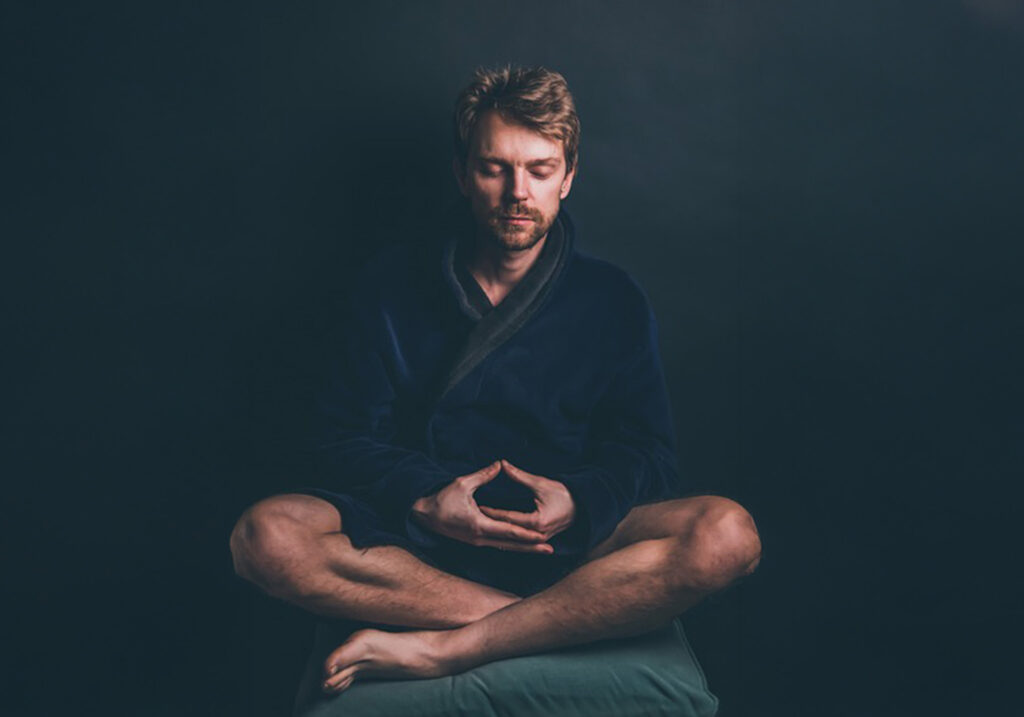When it comes to keeping your mind and body in check, meditation can be a powerful tool. Meditation can help you get rid of stress after working hard all day long.
However, meditating cannot be done anywhere. You need a proper, private space to meditate. Some place quiet where you can be by yourself. If you think you do not have a space in your home to be alone, think again. An unused garage might just be the perfect place for you!
Reimagining Your Garage as a Relaxation Space
A garage is typically associated with car storage, tools, and clutter, but with a little creativity and effort, it can be transformed into a peaceful retreat. Converting your garage into a relaxation space allows you to escape from the daily grind without leaving your home. Whether you want a personal sanctuary for reading, a cozy lounge for entertainment, or a meditation space to unwind, the possibilities are endless. The key is to envision your ideal retreat and take intentional steps to bring it to life.
Before beginning your transformation, it is essential to envision how you want to use the space. Consider the ambiance you want to create and the type of activities you plan to enjoy in your relaxation area. Some may prefer a minimalist setup with soft lighting and comfortable seating, while others might want to incorporate entertainment features like a television or sound system. By setting a clear purpose, you can design a space that suits your lifestyle and personal preferences, ensuring that it becomes a true haven.
A relaxation space should feel inviting and comfortable, so it’s important to think beyond functionality. Pay attention to aesthetics, textures, and sensory elements. Soft lighting, plush seating, and soothing colors can help create a calming environment. Incorporating personal touches such as artwork, plants, or decorative items will make the space feel more like a retreat rather than a repurposed garage. The more attention you give to detail, the more enjoyable and useful your relaxation space will be.
Clearing and Preparing the Space
The first step in creating a relaxation space in your garage is to declutter and clean thoroughly. Over time, garages accumulate unused items, broken tools, and storage boxes. Sorting through these belongings and deciding what to keep, donate, or discard will free up valuable space for your new retreat. Investing in efficient storage solutions such as wall-mounted shelves, pegboards, and cabinets can help organize the remaining items while maintaining a tidy environment. The more organized your space is, the more inviting and stress-free it will feel.
Once the space is cleared, deep cleaning is necessary. Sweep the floors, wipe down surfaces, and remove any cobwebs or dust. If the walls and floor are unfinished, consider painting them with light, calming colors to enhance the space’s tranquility. A fresh coat of paint can make the garage feel more inviting and less like a utility area. Additionally, addressing any structural issues, such as cracks in the walls or leaks, will ensure a stable foundation for your new relaxation space.
To create a more comfortable setting, you may also want to consider upgrading the flooring. Concrete floors can feel cold and unwelcoming, but adding a soft area rug, interlocking foam tiles, or even engineered wood flooring can make a significant difference. A cozy, well-maintained space will make it easier to unwind and enjoy your time in the garage. With a fresh, clean foundation, you can move forward with designing a space that suits your relaxation needs.
Improving Insulation and Ventilation
A comfortable relaxation space requires proper insulation and ventilation. Many garages lack adequate insulation, making them too hot in the summer and too cold in the winter. Adding insulation to the walls, ceiling, and garage door will help regulate the temperature, ensuring a comfortable environment year-round. Spray foam insulation or rigid foam boards are excellent options that provide both temperature control and soundproofing, helping to create a peaceful retreat.
Proper ventilation is equally important, as garages tend to be poorly ventilated. Installing vents or an exhaust fan will improve air circulation, reducing humidity and stale air. This is especially important if you plan to spend extended periods in the space or if you incorporate electronics, candles, or other items that might affect air quality. A well-ventilated space will feel fresher and more enjoyable, making it easier to relax and unwind without discomfort.
If possible, consider adding windows or a skylight to allow natural light and fresh air to enter the space, creating a more pleasant atmosphere. Natural light has been shown to improve mood and well-being, making it a valuable addition to your relaxation space. If adding windows isn’t an option, high-quality LED lighting that mimics natural daylight can help create a similar effect. Combining insulation, ventilation, and thoughtful lighting choices will ensure that your garage retreat remains comfortable and inviting in every season.
Choosing Comfortable Flooring
Standard concrete garage floors are often cold and uninviting. Upgrading the flooring is a great way to enhance comfort and aesthetics. Consider installing interlocking foam tiles, rubber mats, or laminate flooring to add warmth and cushioning underfoot. If you prefer a more luxurious touch, area rugs or carpets can provide softness and contribute to a cozy ambiance.
For those who plan to use the relaxation space for yoga or meditation, a padded floor surface can make stretching and sitting more comfortable. Flooring options should align with the intended use of the space, ensuring both functionality and style.
Creating the Right Ambiance with Lighting
Lighting plays a crucial role in setting the mood of a relaxation space. Harsh, fluorescent lighting can feel industrial and unwelcoming, so opting for warm, soft lighting is a better choice. Installing dimmable LED lights or smart bulbs allows you to adjust the brightness to suit different moods and activities.
Incorporating a variety of lighting sources can enhance the space further. Floor lamps, table lamps, and string lights can create a cozy, inviting atmosphere. If your garage has windows, using sheer curtains can help diffuse natural light, reducing glare while maintaining privacy.
Selecting Comfortable Furniture
Furniture selection depends on how you plan to use your relaxation space. For a cozy reading nook, a plush armchair or recliner with a side table for books and drinks would be ideal. If you envision a social lounge area, consider adding a comfortable sofa, bean bags, or floor cushions for relaxed seating.
For those who want to use the space for meditation or yoga, minimalist furniture such as a low bench, meditation cushions, or a simple rug may be more appropriate. Ensuring that furniture is comfortable and functional will make the space more inviting and enjoyable.
Incorporating Personal Touches
Personalizing the space with decor and accessories can make it feel more like a true retreat. Artwork, framed photos, plants, and decorative pillows can add warmth and character. Selecting soothing colors, such as soft blues, greens, and neutrals, can further promote relaxation.
Adding scents can also enhance the ambiance. Aromatherapy diffusers, scented candles, or incense can create a calming environment. Choosing essential oils like lavender, chamomile, or sandalwood can help reduce stress and promote relaxation.
Entertainment and Sound Elements
Sound is an important factor in creating a relaxing environment. Installing a sound system or Bluetooth speakers allows you to play calming music, nature sounds, or audiobooks. If the space will be used for meditation, a white noise machine or water fountain can add a soothing background sound.
For those who enjoy watching movies or gaming, setting up a small entertainment system with a TV and comfortable seating can turn the garage into a private escape. Soundproofing the walls with acoustic panels or heavy curtains can help reduce noise disturbances and create a more immersive experience.
Maintaining a Comfortable Temperature
Temperature control is essential for making the space usable year-round. Portable heaters, electric fireplaces, or heated flooring can keep the garage warm in colder months, while ceiling fans or air conditioning units can provide cooling in the summer. A well-insulated garage door will also help in maintaining a stable temperature.
If electricity access is limited, battery-operated fans or space heaters can be a practical alternative. Ensuring climate control will make your relaxation space comfortable regardless of the season.
Creating a Multi-Purpose Retreat
While the primary goal is to create a relaxation space, making the garage multi-functional can add to its practicality. A small workstation with a desk and chair can serve as a quiet spot for reading or journaling. If you enjoy creative hobbies, setting up an art corner with a canvas and easel can provide a peaceful escape.
For fitness enthusiasts, incorporating a small workout area with a yoga mat, resistance bands, or light weights can make it easy to stay active while still maintaining a calming environment. Designing a space that meets multiple needs ensures that it remains a valuable part of your home.
Conclusion
Transforming your garage into a relaxation space is a rewarding project that enhances your home’s functionality and provides a personal sanctuary. By carefully planning the layout, improving insulation, selecting comfortable furniture, and incorporating personal touches, you can create a tranquil retreat tailored to your needs. Whether you use the space for unwinding, meditation, or socializing, a well-designed garage relaxation area can become your go-to escape from everyday stress.

